#italian carrara marble
Photo
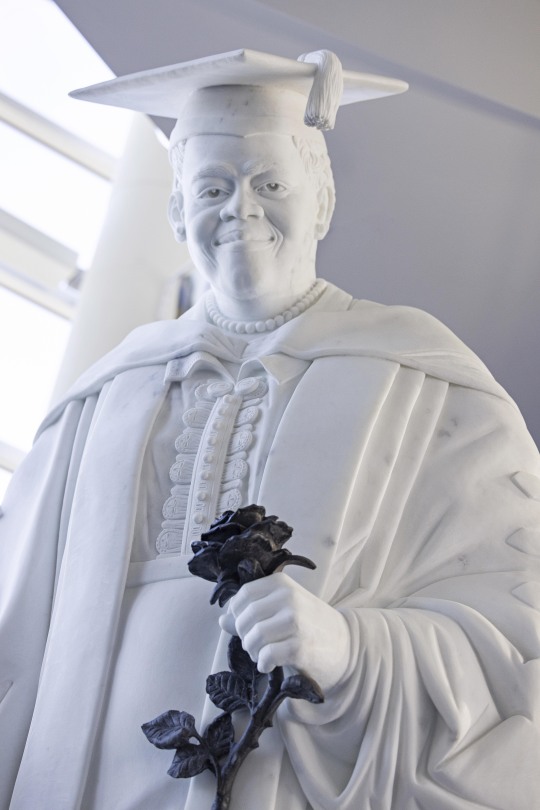


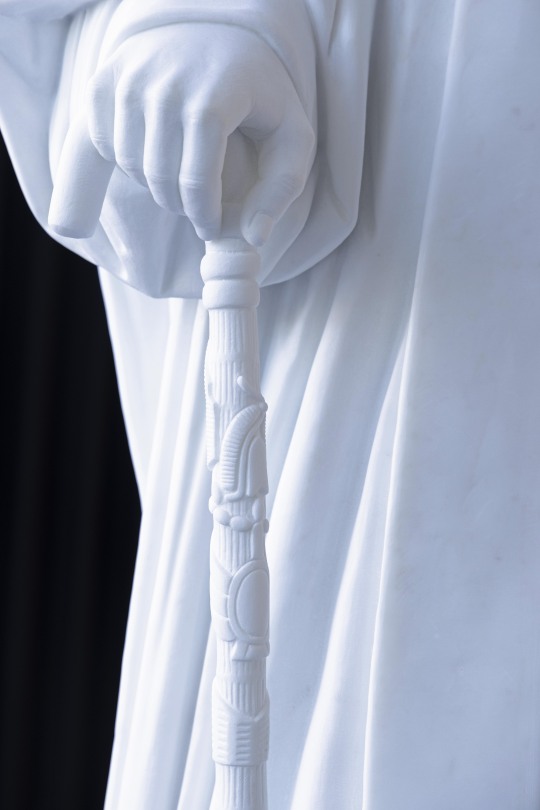



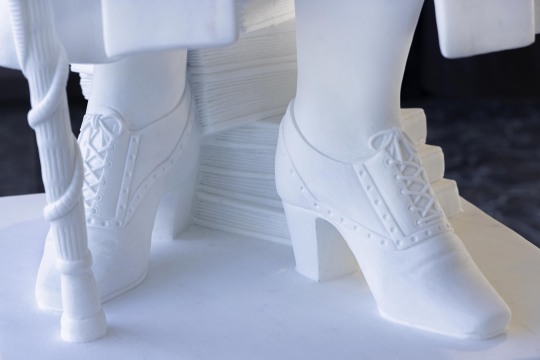
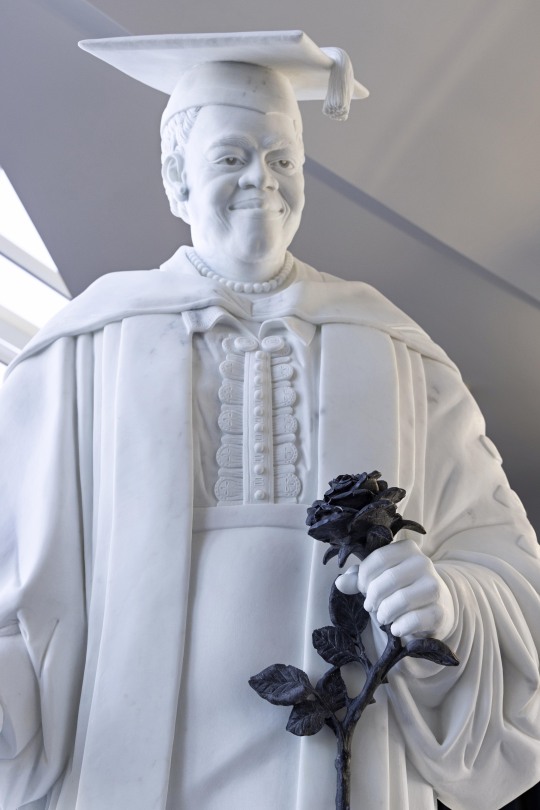
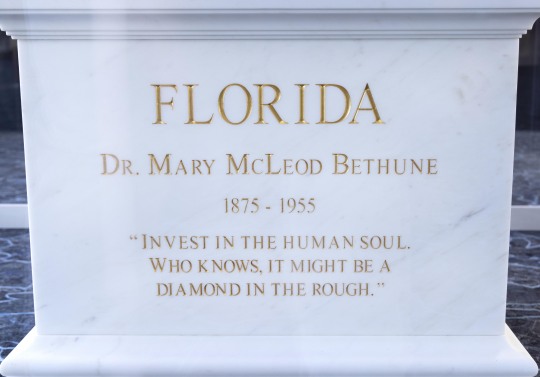
Dr. Mary McLeod Bethune Statue in Florida
A few months ago, I had the opportunity to photograph the larger-than-life marble statue of civil rights pioneer, presidential advisor and renowned Black educator, Dr. Mary McLeod Bethune, at the News-Journal Center in Daytona Beach, FL before it was being transferred to the National Statuary Hall at the U.S. Capitol. As the first state-commissioned statue of an African American, this project was led by University of Florida alum Bob Lloyd and sculpted by artist Nilda Comas, the first artist of Puerto Rican descent commissioned to sculpt a statue for the National Statuary Hall Collection.
The statue is made of Italian Carrara marble and carved by Comas in Pietrasanta, Italy. The combined statue and pedestal are 11 feet tall and weigh 6,129 pounds. Comas depicts an imposing, mature Bethune looking slightly downward, as though at a child. Her benevolent smile conveys her determined yet gentle demeanor. She holds a walking stick in her right hand and a black marble rose in her left, and she wears academic garb, including a mortarboard cap and tassel and a long robe. A dress with embroidered collar and lace details and a simple pearl necklace are visible below the open robe. Her shoes, with laces and sturdy heels, evoke pairs she wore when photographed in similar attire.
Dr. Mary McLeod Bethune was the founder of Bethune-Cookman College, Florida’s first institution of higher education for African Americans. Dr. Bethune’s statue replaced the statue of Confederate General Edmund Kirby Smith in the Capitol’s Statuary Hall.
#mary mcleod bethune#statue#bethune cookman college#florida#daytona beach#marymcleodbethune#bethunecookmanuniversity#ufalumni#boblloyd#adayeinthelife#national statuary hall#us capitol#bcc#national statuary hall collection#nildacomas#italian carrara marble#marble#educator#civilrights#comas#carrara marble
5 notes
·
View notes
Text
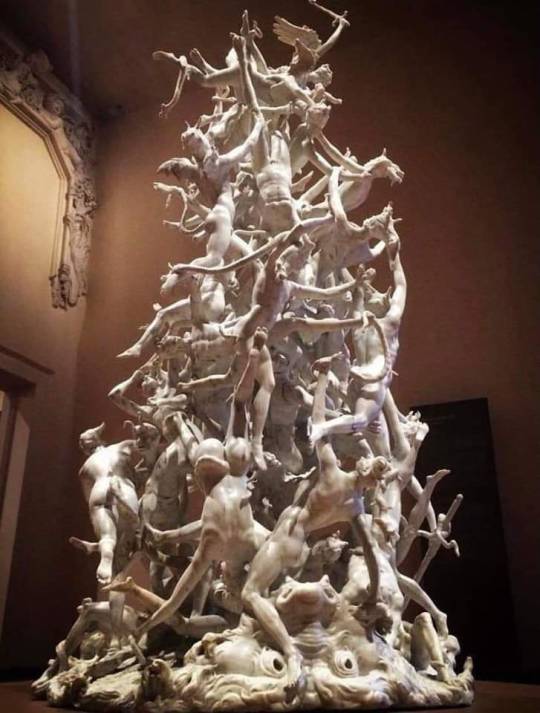
Pyramid of sixty figures carved from a single piece of Carrara marble (The Fall of the Rebel Angels) - It is located in the Palazzo Leoni Montanari - Gallerie d'Italia by Padovan sculptor Agostino Fasolato. Vicenza, ITALY
#pyramid of sixty figures#carrara marble#the fall of the rebel angels#located#palazzo leoni montanari#gallerie d'italia#padovan#italian sculptor#agostino fasolato#vicenza#italy#italia#europe#europa
215 notes
·
View notes
Photo
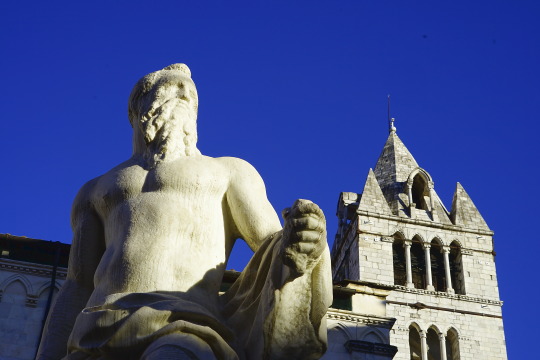
Fontana del gigante e campanile della cattedrale a Carrara
Fountain of the giant and bell tower of the cathedral in Carrara
http://www.obiettivofotografia.it/stefanosansavini/gallerie/paesaggi/citta-italiane/carrara-parte-prima/
#stefano sansavini#sansa55#obiettivofotografia.it#italian ohotographer#photographers on tumblr#Carrara#tuscany#Italy#fountain#giant#cathedral#bell tower#statue#marble
46 notes
·
View notes
Text

November 13, 2022
Monument to Goethe, Villa Borghese, Rome (Italy)
© Maurizio Antonelli
#johann wolfgang von goethe#goethe#sculpure#monument#faust#20th century#italian heritage#valentino casali#carrara marble#villa borghese#roma#rome#italy#november#november mood#dusk#moodyphotography#dark photography#gothic mood#ademater personal selection blog
4 notes
·
View notes
Text

Carrara Marble
Mobile: +905379230748
Carrara marble, which takes its name from the Carrara region of Italy, is a white-colored, gray-veined marble type that has succeeded in making its name widely both in the world and in Italy.
It is a frequently preferred marble with its unique patterns and gray background appearance. In addition to its natural appearance with its white density, it is a great product because it does not have any harm in terms of health. This marble, which can take different forms and is quarrying from Carrara Brezza quarries, is a highly decorative product of its kind, thanks to the unique effects of honing, polishing and polishing applications. Carrara Brezza will fascinate you with its magnificent appearance and will be the right choice for those who want to create a dynamic environment. If you want the reflection of elegance in your living spaces, we recommend this product that will meet your exact needs. Carrara Brezza, which is a remarkable variety among marble types, has a homogeneous color distribution and is also long-lasting. Therefore, it is possible to use it without any problems in the long term.
#project#marble#design#travertine#naturalstone#silver#modern design#architecture#carrara marble#italian marble
1 note
·
View note
Photo

Enclosed Dining Room
Ideas for an enclosed dining room with white walls and no fireplace include a large contemporary porcelain tile floor.
#modern italian dining table#12' ceilings#carrara dining table#ultra-compact porcelain#stone#hand blown italian glass#carrara marble
0 notes
Text



#1 & #2: A Greek Terracotta Aphrodite, Hellenistic Period, Circa 3rd Century B.C. from Christie's.
#3: "The Birth of Venus" an Italian carved and tinted and carved Carrara marble table lamp, Florence, late 19th century/early 20th century, from Sotheby's.
🐚🌊💖💘🫧🦪✨️
#aphrodite goddess of love and beauty#venus goddess#aphrodite greek mythology#venus roman mythology#hellenic gods#hellenic community#roman gods#hellenic pagan#hellenic worship#hellenic deities#hellenic polytheism#hellenism#pinterest finds#greco roman mythology#greco roman#roman mythology#greek mythology#venus goddess of love and sexuality#divine feminity#divine female#divine feminine#ancient art#old art#aphrodite almighty#aphrodite altar#aphrodite goddess
339 notes
·
View notes
Text
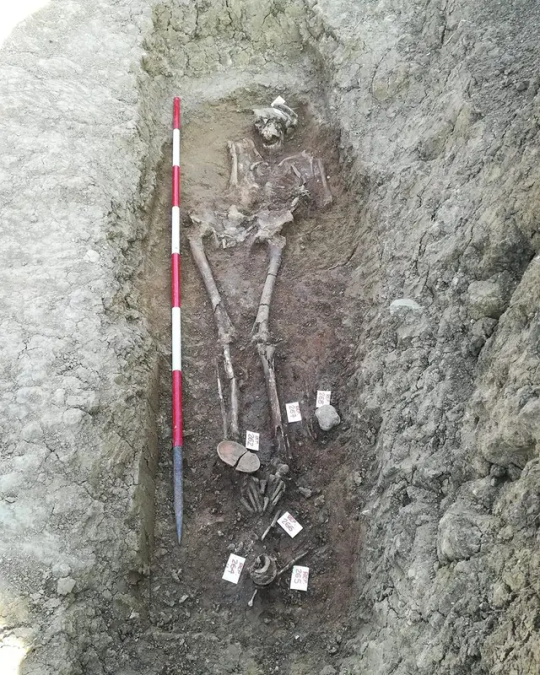
Imperial Roman Necropolis Found in Sicily
Archaeologists with the civil engineering company Italferr have unearthed a Roman settlement and necropolis during the construction of the new Palermo-Catania-Messina railway link in Sicily.
Located on a hill overlooking the Dittaino River, this Roman settlement dates back to the mid-1st to the 3rd century CE. The site’s strategic position, offering control over the Dittaino Valley and key communication routes, underscores its importance during its time.
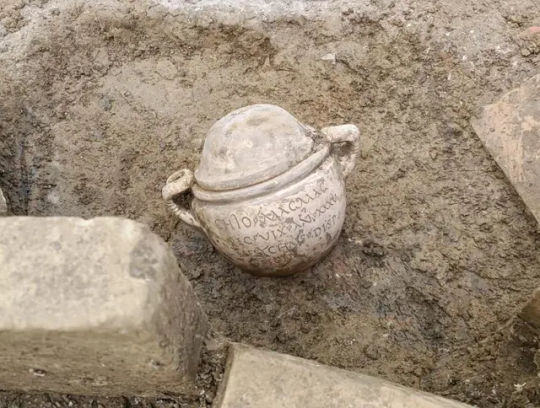
Excavations have revealed a well-organized rustic villa complex, known as a villa rustica, which was central to the settlement’s agricultural and livestock activities. The villa’s central room, flanked by three ambulatories, has been identified through traces of collapsed roof materials. The villa’s remains indicate not only a residential function but also a productive role, likely linked to the region’s agricultural economy. Remnants of pavements and collapsed structures further emphasize the villa’s significance.
To the west of the settlement lies an extensive necropolis with 168 burials, showcasing a highly stratified society. The burials range from simple earth pits covered with tiles to monumental tombs, indicating significant social diversity within the community.
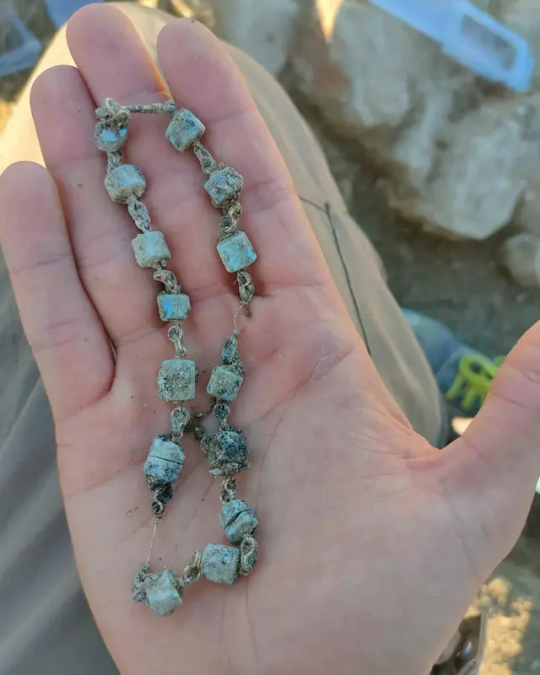
Among the notable graves is a bastum, or mound grave, which contained exceptional funerary offerings, including five necklaces, two gold rings, and a cinerary urn made from Carrara marble.
The urn bears an inscription dedicated to a “Magnus Magister Pecoris,” an official responsible for overseeing sheep breeding, and another inscription mentioning a “dispensator” who donated the urn to the deceased.
Magnetometric surveys to the east of the settlement have identified a possible cult area. Archaeologists found traces of burnt animal bones, ash layers, and alluvial deposits in a natural channel, indicating ritual activities. Among the recovered objects are oscilla masks, bone needles and pins, and a die with an undeciphered inscription. These artifacts suggest the performance of rituals and offerings to various deities in connection with festivals and ceremonies.

Italferr, a company under the Ferrovie dello Stato Italiane Group, has been at the forefront of integrating archaeological expertise with modern engineering practices since the 1990s. The company’s proactive approach to preventive archaeological investigations has proven instrumental in preserving cultural heritage while advancing infrastructure development.
The excavations at the Palomba-Catenanuova section began in 2020 in collaboration with the Soprintendenza Beni Culturali e Ambientali di Enna.
By Dario Radley.

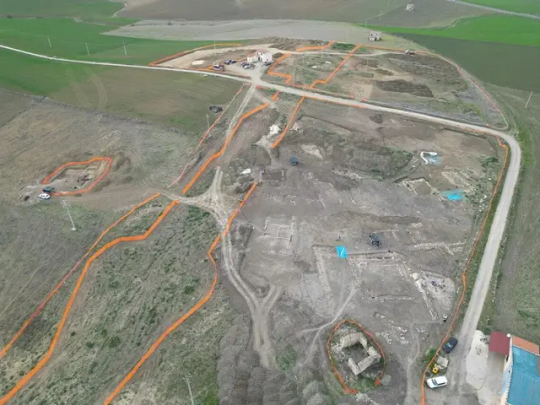
#Imperial Roman Necropolis Found in Sicily#Dittaino Valley#ancient tomb#ancient grave#ancient necropolis#ancient artifacts#archeology#archeolgst#history#history news#ancient history#ancient culture#ancient civilizations#roman history#roman empire#roman art#ancient art
169 notes
·
View notes
Text

SPHINX. 19th.century, Italian. carrara marble. http://hadrian6.tumblr.com
180 notes
·
View notes
Text
Peles Castle
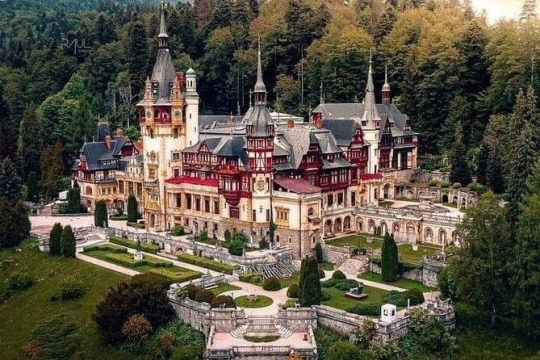
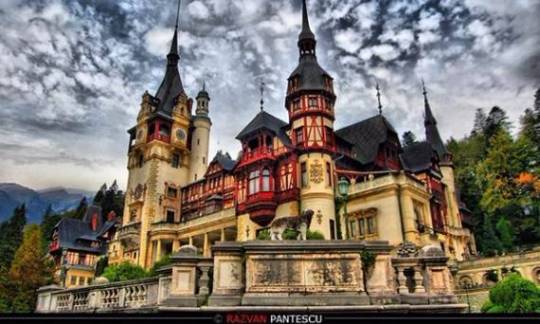





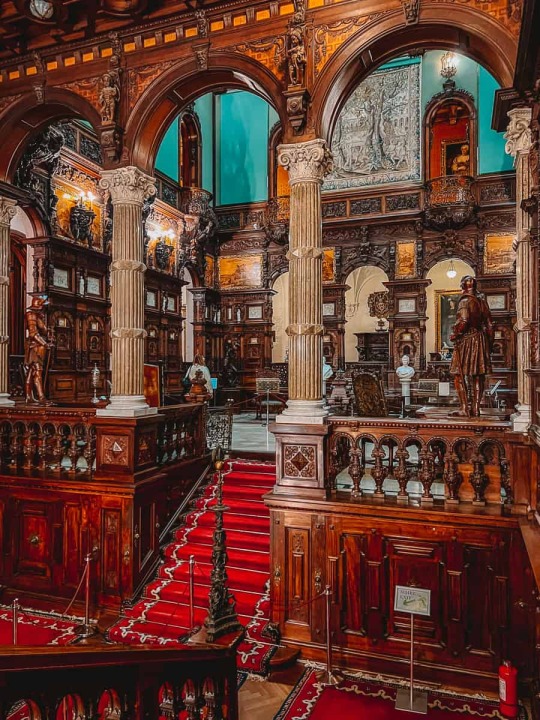





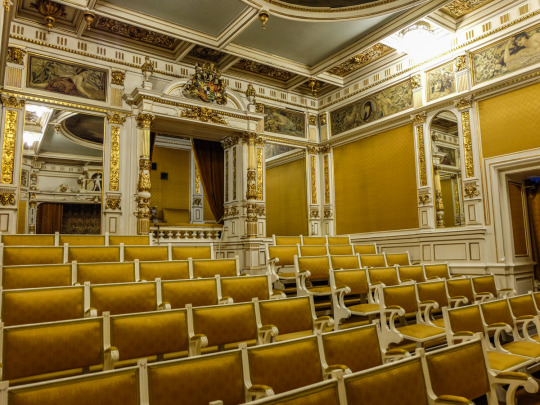
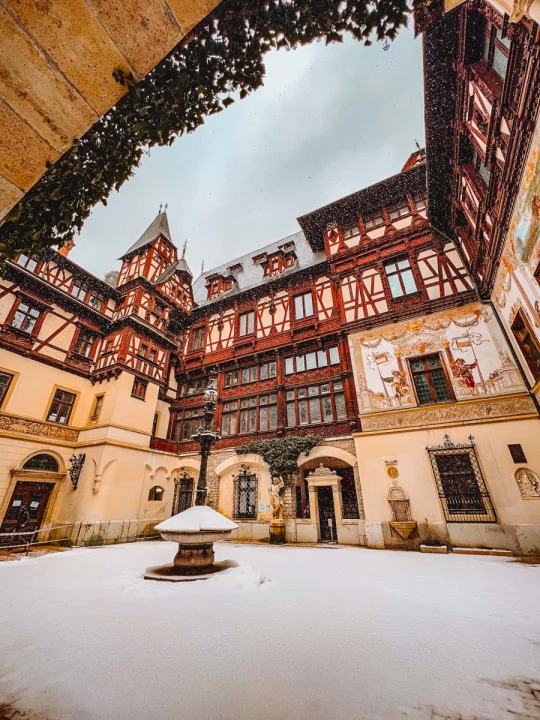

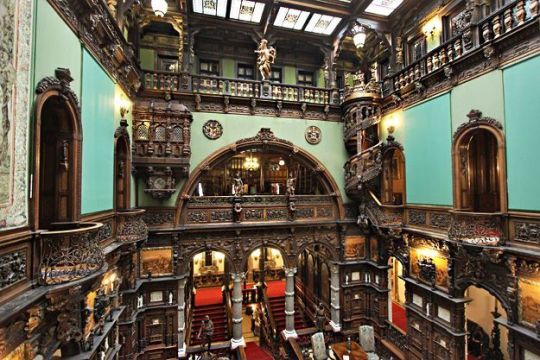
Peleș Castle is located at the foot of the Bucegi Mountains in the town of Sinaia in Prohova County, Romania. King Carol I of Romania built the Neo-Renaissance castle from 1873 to 1883; it was under his reign that the country gained its independence. Along with the castle, the king commissioned a royal summer retreat, a hunting lodge, royal stables, guards’ chambers, an Economat building, and a power plant on the estate. Peleș Castle was the world’s first to be fully powered by locally produced energy. The castle went through later additions throughout its history and was once seized by the Communist regime. The castle was closed from 1975 to 1990, but after the December 1989 Revolution the castle was re-established as a heritage site and reopened to the public. The castle boasts 160 ornate rooms carrying themes from cultures around the world. The rooms are lavishly decorated with wall and ceiling frescoes by Gustav Klimt and Franz von Matsch, Murano crystal chandeliers, German stained-glass windows, Cordoba leather covered walls, carved teak furniture in the Music room, and a 4,000 piece collection of arms and armor are displayed in the Armory. The castle also has a movie theater and a Turkish salon. The property has seven Italian neo-Renaissance terrace gardens made mostly of Carrara marble, while the gardens have statues, fountains, stairways, and marble paths. Peleș Creek runs through the courtyard, while a towering statue of King Carol I overlooks the main entrance. Peleș Castle is open to the public for guided tours and serves as the Peleș National Museum.
79 notes
·
View notes
Text
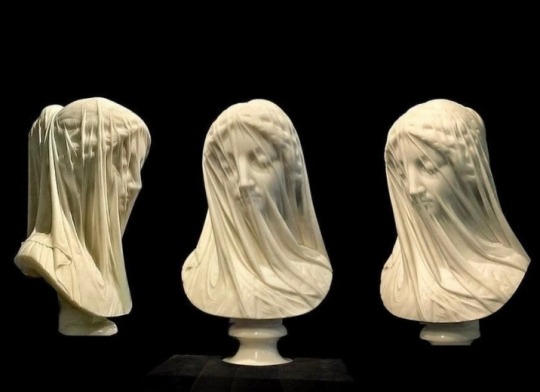
The Veiled Virgin was created by Italian sculptor, Giovanni Strazza (1818–1875), in Rome during the 1850s.
The statue appears translucent but is made completely out of Carrara marble, a material derived from Tuscany and used frequently by Italian Renaissance artists and ancient Roman builders.
In 1856, the statue was transported to Newfoundland where it was received by Bishop John Thomas Mullock (27 September 1807 – 26 March 1869).
In his diary, he wrote:
"Received safely from Rome, a beautiful statue of the Blessed Virgin Mary in marble, by Strazza. The face is veiled, and the figure and features are all seen. It is a perfect gem of art."
#Veiled Virgin#Giovanni Strazza#Carrara marble#Newfoundland#Bishop John Thomas Mullock#Blessed Virgin Mary#statue#Rome#marble#Renaissance#marble busts
61 notes
·
View notes
Text

Just imagine the ability to render solid stone transparent. Giovanni Strazza possessed this incredibly rare artistic talent. His masterpiece, "The Veiled Virgin," carved from flawless Carrara marble, stands as one of the most astounding achievements in the history of sculpture.
Strazza's mastery of the "wet drapery" technique carried on the tradition of other Italian sculptors like Giuseppe Sanmartino, who, a century earlier, had crafted mesmerizing marble veils, exemplified by the renowned "Veiled Christ."
This artistic tradition can be traced back to earlier sculptors, including renowned Renaissance artists such as Michelangelo, as well as the ancient masters from Greece's Hellenistic era, who were celebrated for their intricate depictions of fabric folds.
However, in the mid-19th century, Strazza pushed this technique to its limits. The delicate, layered effect he achieved allows the observer to distinctly perceive Mary's facial features through the translucent veil while simultaneously creating the illusion of weightlessness.
The process of how he transformed solid stone into something so soft and fluid, using only basic hand tools, remains a profound mystery.
Credit : owner
20 notes
·
View notes
Text

MWW Artwork of the Day (8/28/24)
Gianlorenzo Bernini (Italian, 1598-1680)
David (c. 1623-24)
Carrara marble statue, 170 cm. high
Galleria Borghese, Rome
In comparison to the earlier celebrated David sculptures, Bernini paid particular attention to the biblical text and sought to follow it as closely as possible. Unlike the earlier sculptures, Bernini's hero has a shepherd's pouch around his neck which already contains pebbles ready to use in the deadly sling which he will use against Goliath. The upper part of David's body is represented immediately after has taken a stone from his pouch. This means that the torso twists and strains not just physically but psychologically. The hero is depicted when, having taken the stone from his pouch, he twists his body in the opposite direction, tensioning it spring-like, then stops to think for a spilt second before releasing the stone that will slay Goliath.
5 notes
·
View notes
Text




The heart of the Apuan Alps in Tuscany, Italy, is home to one of the biggest marble mines in the world, with about 160 active quarries in the Massa Carrara and Lucca areas. Since Roman times, creamy-white Carrara marble has been dug out of these mountains. It is the most sought-after marble in the world, and has inspired artists and architects everywhere.
But the Apuan Alps also host an ecosystem that is home to the Italian alpine newt (Ichthyosaura alpestris apuana). In November, Manuel Micheli, a photographer working with the Apuane Libere organisation, stumbled across the newt in Crespina 2, a decommissioned quarry. [...]
“It was incredible to discover such a group,” says Gianluca Briccolani, the co-founder of Apuane Libere, a volunteer organisation formed in 2021 to protect the mountains from environmental degradation, including water contamination caused by the heavy industrialisation of the marble industry.
Cava Crespina 2 lies under Monte Sagro and overlooks the Mediterranean. It was closed in 2014 and became a perfect place for newt reproduction thanks to an underground spring and rainwater filtration in conjunction with the lake’s impermeabilisation, caused by marble dust waste (marmettola).
Since Micheli’s discovery, the newt population has grown – and the scientific and local community has mobilised to protect the newts. Plans to reopen the quarry were halted earlier this month by Unesco and the Apuan Park.
“Last year, we counted at least three dozen newts in different life stages,” says the herpetologist Gabriele Martinucci. “This was a sensational discovery because it means they live in the quarry throughout the entire year. [...]”

If the Crespina 2 quarry were to reopen, however, the newts there would need to be moved because the excavation would affect the lake where they live, says Apuane Libere.
“We want to do everything to protect the newts,” says Briccolani. “Marble quarrying has nothing to do with art. Entire blocks of marble are crushed to create the calcium carbonate that we find, for example, in our toothpaste. The well-known Carrara marble is no longer used to make the future Davids by Michelangelo, but ends up crumbled or, at most, in the kitchens and bathrooms of a very few rich people.”
It isn’t just newts that are threatened, say campaigners. The Apuan Alps chain hosts about 30% of endemic national flora, including a rare cornflower that grows on the slopes of Mount Borla. But the newts have become “a symbol of the resilience of Apuan biodiversity”, says Andrea Ribolini of the Italian Alpine Club.
Many of those protecting the environment in the area are the children of former quarry workers, including Alberto Grossi, a longstanding activist and group manager for the Apuan Alps of the Legal Intervention Group, an Italian ecological association. [...] Guido Dazzi, a fellow environmentalist, says: “I’m 60 years old and my father was a quarry worker. I come here to monitor whenever I can. [...]”
---
Headline, images, captions, and text by: Alice Pistolesi and Monica Pelliccia. “Brave newt world: the species swimming against the tide of Italian marble.” The Guardian. 23 March 2023. [Some paragraph breaks and contractions added by me.]
77 notes
·
View notes
Text
Rosehill Mausoleum, Chicago
The mausoleum features a rotunda with relief panels of the four seasons by Leon Hermant, sculptor

Rosehill Masoleum. Source: Rosehill Cemetery, Dignity Memorial
Background:
Rosehill Cemetery, in northwest Chicago, is the city's largest and oldest cemetery, dating back to 1859, and contains at least 200,000 grave sites in a 350-acre garden setting.
Dedicated in 1914, the cemetery's Rosehill Mausoleum was designed by architect Sidney Lovell, who is interred within. The interior is almost entirely of marble, with the floors composed of Italian Carrara marble. Several later additions would be made to the building; there were six additions made after 1913, and a final one in 1975.
Leon Hermant (1866–1936) was an American sculptor best known for his architectural sculpture. Hermant was born in France, educated in Europe and came to America in 1904 to work on the French Pavilion at the Louisiana Purchase Exposition in St. Louis, Missouri.
For most of his career he was based in Chicago, working mostly in the American midwest, and frequently with a partner Carl Beil.
From 1904, when they met in St. Louis, until 1927, Hermant and Beil were partners at their Sculpture Studio at 21 East Pearson Street in Chicago. Leon was the Artist, Carl, the "Executioner." Hermant continued his art after Beil's death in 1927, receiving a major commission for the Indiana State Library in 1934. Hermant exhibited at the Art Institute of Chicago in the 1920s, and would complete many sculptures throughout the U.S. [Chicago Sculpture in the Loop]
In 1928 Hermant was awarded the Légion d'honneur by the French government for his Louis Pasteur Monument in Grant Park, Chicago.

Pasteur Monument, Grant Park, Chicago
In the 1929 Fourth Addition to Rosehill Mausoleum, a marble rotunda features relief panels of the four seasons executed by Hermant, placed between engaged marble columns. Each panel contains a brief quote below, appropriate to the season. Leon Hermant's signature appears on the bottom right of only one panel, Winter.
The yellowish lighting within the rotunda is so dim that photography is difficult, and one strains to appreciate the quality of the sculptures. I'd admired these panels before, but it was thanks to some thorough research by Jim Craig of Under Every Tombstone that I was alerted to their sculptor's identity.

Leon Hermant, 1866-1936 Source: Under Every Tombstone

Construction News, February 22, 1913, pp. 6-7. Click to view larger

See detail of ad below:


Photos from my recent visit to Rosehill Mausoleum, July 19, 2024:

Rosehill Mausoleum, corridor leading to the rotunda

Rotunda east side, Winter (left), Spring (right)

Rotunda west side, Summer (left), Autumn (right)

The south of the rotunda is occupied by the elegant Rawson family crypt. The north opens to a corridor leading to other areas of the mausoleum.
The Four Seasons

Spring

Summer

Autumn

Winter
Inscriptions at the base of the four panels:

SPRING
Hail bounteous May, that dost inspire
Mirth, and youth and warm desire
Hill and dale dost boast thy blessing
This we salute thee with our early song
and welcome and wishe thee long.
Milton.

SUMMER
But thy eternal summer shall not fade,
…So long as men can breathe, or eyes can see,
So long lives this, and this gives life to thee.
Shakespeare

AUTUMN
There is no death! The stars go down
To rise upon some other shore.
And bright in heaven's jeweled crown
They shine for evermore.
…For all the universe is life…
There are no dead."
Maeterlink

WINTER
When once our heavenly souls shall climb
Then all earthly grossness quit.
Attired with stars we shall forever sit
Triumphing over death and change and thee
O time!
-Milton-

Detail of Autumn

Signature of Leon Hermant Sc. [sculptor] on the Winter panel

A sculpture inside a family crypt [not attributed to Hermant, but I liked it]

Plan of main level of Rosehill Mausoleum; yellow circle indicates location of the four seasons rotunda.

Beil and Hermant created the relief sculptures above the mausoleum's main entrance (see below).

The mansions of the silent, by Booth, A.L. Published in: Fine arts journal, 1916.
Leon Hermant's other works in Chicago include:
Former Illinois Athletic Club, now SAIC MacLean Center; 12th floor frieze (1908); Zeus presiding over athletic contests.
William Shakespeare, (1915) Northwestern University, Evanston, Illinois
Louis Pasteur Monument, (1928) Grant Park, Chicago
City Hall and Cook County Building, (1911), Chicago
Radisson Chicago Hotel [Medinah Athletic Club] Reliefs, (1929), Chicago; According to an article in the Chicago Tribune from Sept 16, 1928 entitled “Building art inspires panels,” “The friezes were designed by George Unger, in collaboration with Walter Ahlschlager, and carved by Leon Hermant."
One North Lasalle Street (1930), Vitzthum and Burns architects, Chicago
via Prabook site
SOURCES/ LINKS:
Léon Hermant, Wikipedia
Sidney Lovell, Wikipedia
"The Mansions of the Silent," by Anne Lisle Booth, Fine Arts Journal, Vol. 34, No. 6 (Jun. - Jul., 1916), pp. 265-274
"Rosehill Cemetery Mausoleum," Construction News, February 22, 1913, pp. 6-7.
#Rosehill#mausoleum#cemetery#chicago#architecture#sculpture#Hermant#Leon Hermant#four seasons#seasons#rotunda
4 notes
·
View notes
Text

The Virgin and Child between two angels carrying baskets of fruits (1465-70) “High relief in Carrara marble, 78 x 58 x 16,5 cm” [Musée du Louvre, Paris, France] — Gregorio di Lorenzo (Italian; ca. 1436 – 1504).
https://collections.louvre.fr/ark:/53355/cl010089275
#philosophy#sculpture#architecture#renaissance#rome#italy#19th century#academia#art history#italian art
4 notes
·
View notes